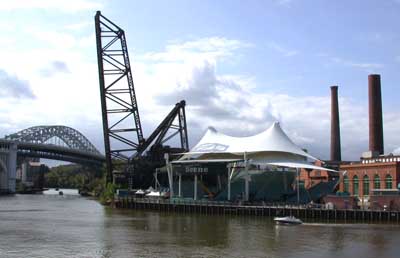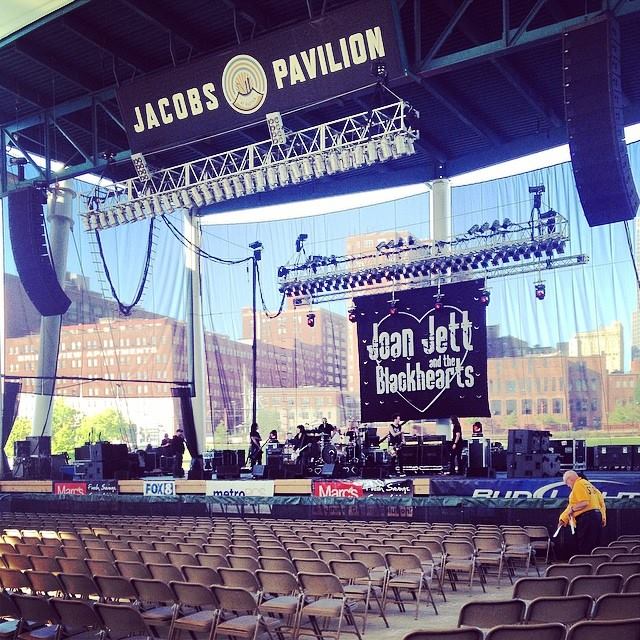I’ve recently have been training as a PA Tech at a local venue, Jacobs Pavilion at Nautica. The venue is a shed with a covered stage that seats about 5,000. It is located in Cleveland Flats and is right on the river. Each of the shows I have worked on has had the same PA and setup configuration. With each gig, I gain more experience with the sound system, which allows me to build more confidence and independence.
The system consists of ten d&b J8s and two J12s per main hang, six B2 subs per side, six Q10s for front fills, and Cs or Vs for side fills. We try to keep our amp racks stacked high and tight in the wings especially on the stage left, which is where monitor world is set up. Each gig brings new challenges with each new act having different needs, power requirements, and stage space.
I have been working a lot at setting up the support monitor world and helping to tech monitors for the supports acts. We have set up a standard support package that includes a Yamaha PM5D for both FOH and Monitors and M2 or M4 wedges. We have a splitter and snake going to FOH and standard mics, stands, and cabling.
At Nautica, we often have to run 100 ft feeder across the stage to get power on stage right. The original power source is located on stage right so we run 50 ft feeder to our branch and then run the 100 ft feeder under the stage to stage right PD and run a 25 ft feeder out of the branch to the PD on stage left.
Load-In tends to be quite quick with two people per hang plus stagehands. We are usually fully set up within an hour depending on how fast we get rigging up in the air and power to our PDs. The hardest part for me with flying PA is figuring out the angle points for the speakers and trim height. We use ArrayCalc to determine our angles for the best coverage we can get in the venue. I haven’t done the calculations on my own just yet for the venue. I’m still slow with the program and need to study and use it more to get a better understanding of how it works. Getting speakers to the correct angles are relatively easy with d&b speakers, it’s a matter of placing pins in the correct spacings as you lift the speaker boxes into place.
Understanding how the motors run with the motor distros and making sure that they are running in phase are important. Running them out of phase could cause problems with the chain stops at the beginning and end of the chain. Knowing when to bump or lift the motors is extremely helpful when hanging speakers from their carts or when adding another stack of speakers under the first. Getting the motors and chain back into the boxes at the end of the night can be another feat. We often have to make sure the motors are facing the right way when they go in the boxes, so when the chain is fed through, it will fall to the middle of the box and can be pushed into the small space underneath the motor to make more space for the rest of the chain.
Loadout goes quickly! I tend to pull all the front fills and side fills first as well as all the cabling. Then I take care of all the cabling in amp world, pack it up and move it out of the way so I can bring in my carts and start bringing down the PA. Once the speakers are back in the carts and all the looms and hardware are put away, we bring the motor cases up and lower the motors down and run out the chain. Then we just have to wait for rigging to bring down our points. It’s amazing how fast packing up PA can be!

